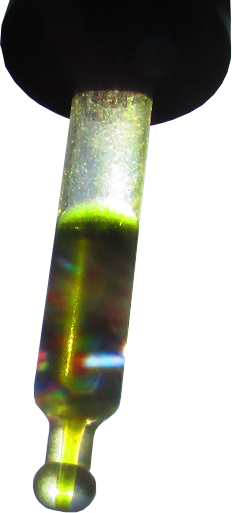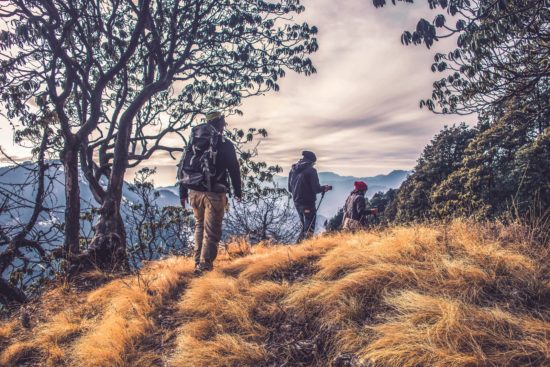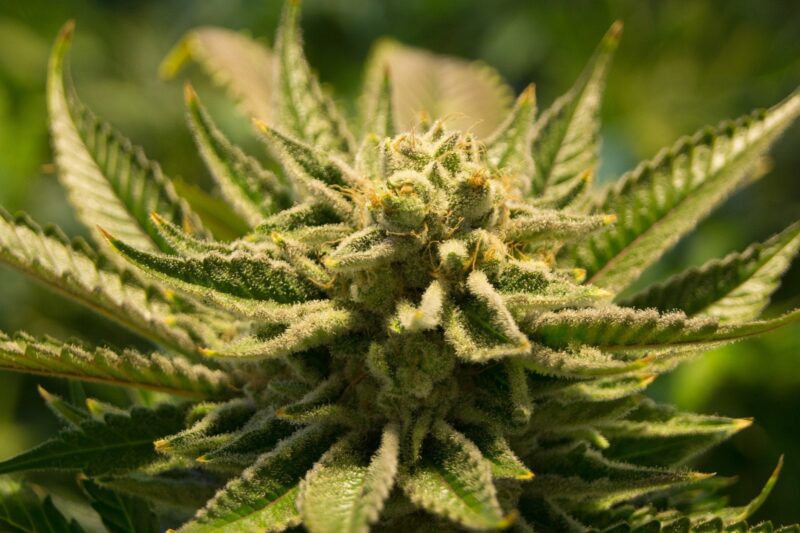Cannabisgebruik hangt samen met meer lichaamsbeweging
Wetenschap/Mens: Cannabisgebruik hangt samen met meer lichaamsbeweging volgens 2 studies
Twee studies uit het VK en de VS suggereren dat cannabisgebruik positief geassocieerd is met lichamelijke activiteit en lichaamsbeweging. Volgens onderzoek van het Cambridge Centre for Sport and Exercise Science van de Anglia Ruskin University, VK, werd cannabisgebruik bij 15 822 deelnemers (gemiddelde leeftijd: 37,5 jaar) geassocieerd met een matig hogere mate van lichamelijke activiteit. Zij concludeerden dat “cannabisgebruik geassocieerd was met hogere niveaus van lichamelijke activiteit en zittijd. Bij interventies om het cannabisgebruik in de VS te verminderen, kan het gepast zijn om lichamelijke activiteit te bevorderen en ervoor te zorgen dat lichamelijke activiteit wordt gehandhaafd zodra het cannabisgebruik is gestopt.”
Deze resultaten worden ondersteund door gegevens van het Centrum voor Kinderen en Gezinnen van de Florida International University in Miami, VS. Deelnemers aan de studie waren 387 adolescenten in de leeftijd van 15-18 jaar die met een tussenpoos van 6 maanden twee evaluaties invulden. Meer lichaamsbeweging bij begin studie werd geassocieerd met een grotere cannabisgebruiksfrequentie (CU) bij de 6-maanden follow-up. De auteurs schreven dat “in tegenstelling tot de hypothesen, adolescenten die meer lichaamsbeweging rapporteerden bij begin studie ook een hogere CU-frequentie rapporteerden in onze steekproef”.
Science/Human: Cannabis use is associated with increased physical activity according to 2 studies
Two studies from the UK and the US suggest that cannabis use is positively associated with physical activity and exercise. According to research at the Cambridge Centre for Sport and Exercise Science of Anglia Ruskin University, UK, with 15,822 participants (mean age: 37.5 years) cannabis use was associated with a moderately higher degree of physical activity. They concluded that “cannabis consumption was associated with higher levels of physical activity and sitting time. When intervening to reduce cannabis consumption in the US populations, it may be appropriate to promote physical activity and ensure physical activity is maintained once cannabis consumption is stopped.”
These results are supported by data from the Center for Children and Families of the Florida International University in Miami, USA. Study participants were 387 adolescents aged 15-18 who completed two assessments 6 months apart. More exercise at baseline was associated with greater cannabis use (CU) frequency at the 6-month follow-up. Authors wrote that “contrary to hypotheses, adolescents reporting more exercise at baseline also reported higher CU frequency in our sample.”
Pacheco-Colón I, Salamanca MJ, Coxe S, Hawes SW, Gonzalez R. Exercise, Decision-Making, and Cannabis-Related Outcomes among Adolescents. Subst Use Misuse. 2021:1-10.
Smith L, Sherratt F, Barnett Y, Cao C, Tully MA, Koyanagi A, Jacob L, Soysal P, López Sánchez GF, Shin JI, Yang L. Physical activity, sedentary behaviour and cannabis use in 15,822 US adults: cross-sectional analyses from NHANES. Public Health. 2021;193:76-82.
Marian Hutten, voorzitter en oprichtster PGMCG
Genomineerd als Patiënt Ambassadeur van de IACM 2018-2021
Nederlands Patiënt afgevaardigde en vertaler van de IACM
De International Association for Cannabinoid Medicines
CannabisMedOrg
Bonn, Germany
Lees ook
- CBD kan de ontwikkeling van ernstige bewegingsstoornissen na inname van neuroleptica voorkomen.
Wetenschap / dier: CBD kan de ontwikkeling van ernstige bewegingsstoornissen na inname van neuroleptica voorkomen.
- Cannabis voorschrijven: Franjo Grotenhermen een Duitse arts in de voorhoede van de medische revolutie
Franjo Grotenhermen een Duitse arts neemt het voortouw in de medische revolutie betreffende cannabis
- Alzheimer (Dementie)
Gebruik medicinale cannabis bij de ziekte van Alzheimer (dementie)
- MS-patiënte Alexandra en het gebruik van pure THC-olie
Sinds 1993 ben ik MS-patient en heb altijd cannabis als medicijn gebruikt. Graag wil ik dat delen, meer mensen kunnen hier veel baat bij hebben. THC voor MS Verslag van de THC-kuur á la Rick Simpson voor multiple sclerose THC voor MS Verslag van de kuur volgens het Rick Simpson protocol = 3 maanden totaal […]
- Liberalisering van CBD-producten leidde tot vermindering van andere medicijnen
Wetenschap / Mens: Liberalisering van CBD-producten leidde tot de vermindering van andere medicijnen
- CBD en CBG vertonen neuroprotectieve effecten
Wetenschap / Cellen: CBD en CBG vertoonden neuroprotectieve effecten
- CBD oftewel cannabidiol biedt een veilige behandeling voor cannabisgebruiksstoornissen
Wetenschap / mens: Volgens een onderzoek biedt CBD een veilige behandeling voor cannabisgebruiksstoornissen
- Verschillende cannabinoïden zoals CBG, CBDV, CBC, THCA en THCV hebben een veelbelovend zenuwbeschermend potentieel
Wetenschap: Verschillende kleinere cannabinoïden hebben mogelijk een veelbelovend zenuwbeschermend potentieel
- Reumatische Artritis
Gebruik cannabinoiden bij artritis vermindert pijn, ontstekingen, lees meer:
- Cannabis heeft een positieve invloed op de conditie van oudere volwassenen
Wetenschap / mens: cannabis heeft geen negatieve invloed op de conditie van oudere volwassenen
- Multiple Sclerose (MS)
Gebruik medicinale cannabis bij MS
- Het gebruik van CBD-hennepsupplementen heeft een positief effect op het HDL-cholesterolgehalte
Wetenschap / mens: Het gebruik van CBD-hennepsupplementen heeft een positief effect op het HDL-cholesterolgehalte
- Zowel CBD als CBG vertonen antioxidatieve en neuroprotectieve effecten in hersencellen.
Wetenschap / cellen: Zowel CBD als CBG vertonen antioxidatieve en neuroprotectieve effecten in hersencellen.
- Volgens een gecontroleerde studie kan CBD effectief zijn bij kinderen met ernstige gedragsproblemen
Wetenschap / mens: een kleine gecontroleerde studie toonde aan dat CBD effectief zou kunnen zijn bij kinderen met ernstige gedragsproblemen
- Zelfs toediening van hoge doses CBD is veilig bij mensen.
Wetenschap / mens: zelfs hoge doses CBD is veilig bij mensen.
- Stress op jonge leeftijd kan leiden tot langdurige ontregeling van het endocannabinoïdesysteem in de kleine hersenen
Wetenschap / dier: Stress op jonge leeftijd kan leiden tot langdurige ontregeling van het endocannabinoïdesysteem in het cerebellum
- Libanon: Parlement keurt een wetsvoorstel goed dat cannabisteelt toestaat voor medisch en industrieel gebruik
In Libanon heeft het Parlement een wetsvoorstel goedgekeurd dat cannabisteelt toestaat voor medisch en industrieel gebruik.
- Gilles de la Tourette
Gebruik cannabinoiden bij Gilles de La Tourette
- Volgens onderzoek gebruiken veel patiënten met reumatische artritis cannabis als medicijn
Wetenschap / Mens: Veel patiënten met artritis gebruiken cannabis
- Volgens onderzoek gebruiken Patiënten met het Tourette syndroom liever medicinale cannabis dan pure THC en Sativex
Wetenschap / Mens: Volgens een onderzoek gebruiken Patiënten met het Tourette syndroom liever medicinale cannabis dan pure THC en Sativex
- Is Cannabis gebruiken schadelijk tijdens de zwangerschap en bij geven borstvoeding?
Zwangerschap: Is gebruik van cannabis/THC tijdens de zwangerschap schadelijk voor de foetus ?
- Cannabistinctuur met THC en CBD effectief bij behandeling Stiff Person Syndroom (SPS)
Wetenschap / Mens: Cannabis is effectief bij de behandeling van het Stiff Person Syndroom (SPS)
- In de UK start men een Medicinale Cannabis Studie met 20.000 patiënten
UK: Medicinale cannabis studie zal 20.000 patiënten omvatten
- Cannabis motiveert om meer te sporten
Cannabis motiveert om meer te sporten
- WHO verandert status Medicinale Cannabis na 60 jaar!
WHO verandert status medicinale cannabis
- Studie: Acuut Cannabisgebruik kan Angst en Depressie verminderen
Volgens studie vermindert Cannabis symptomen van depressie, angst en stress
- Huntington
Gebruik cannabinoiden bij de ziekte van huntington





